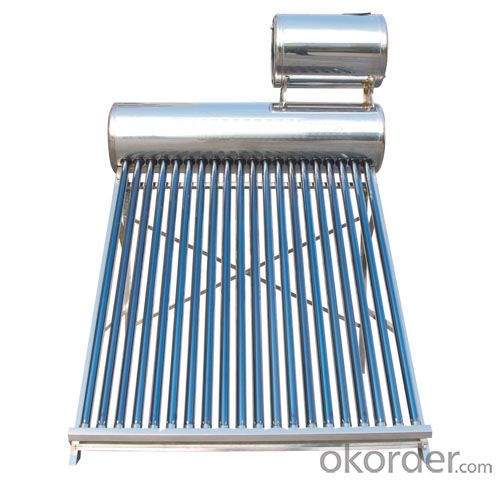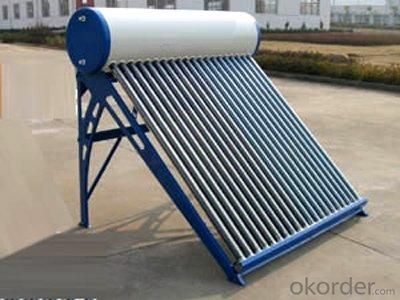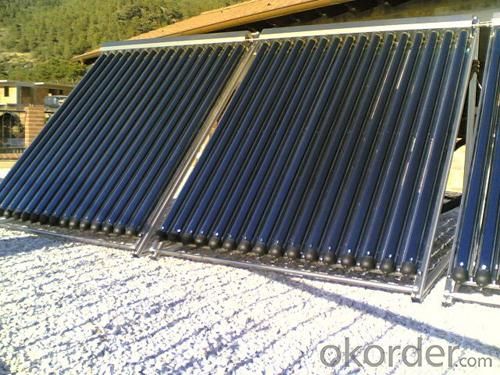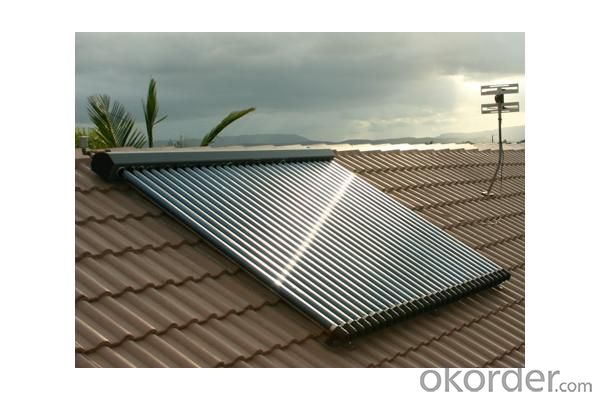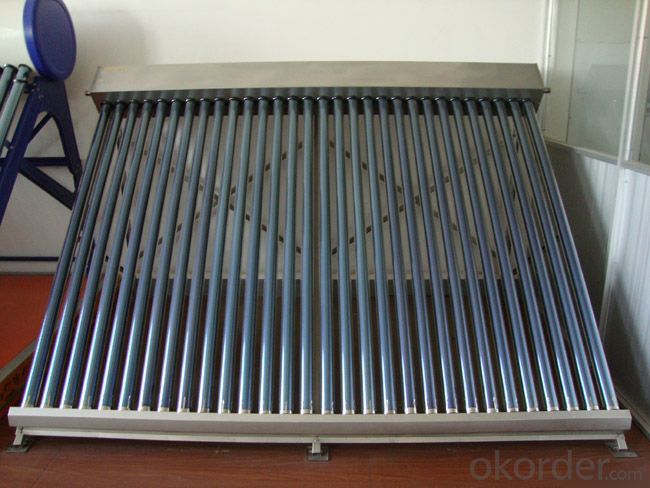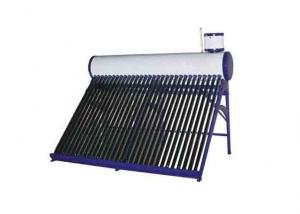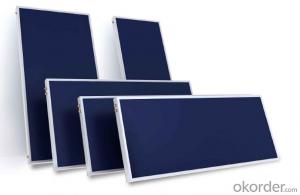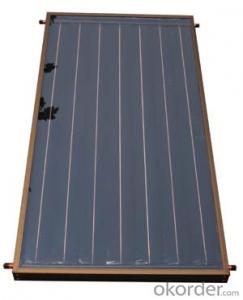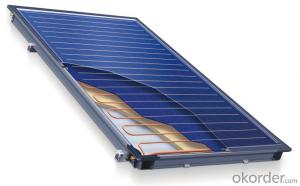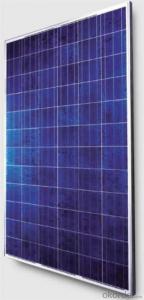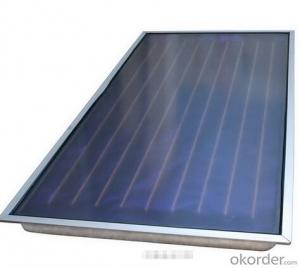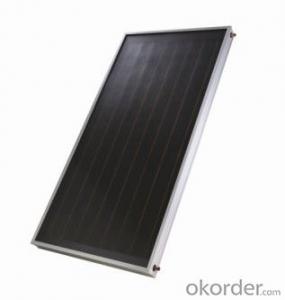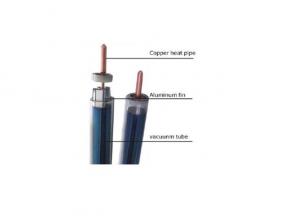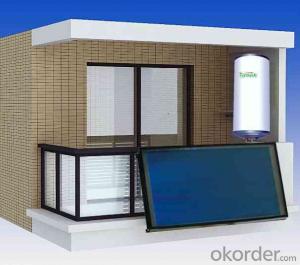Aet Solar Collectors - 18 Tubes High Efficiency Solar Pipes
- Loading Port:
- China main port
- Payment Terms:
- TT OR LC
- Min Order Qty:
- 5 set
- Supply Capability:
- 10000 set/month
OKorder Service Pledge
OKorder Financial Service
You Might Also Like
Specification
manifold (inner) | red copper |
manifold (exterior) | aluminum alloy |
glass tube dimensions | 58mm * 1800mm |
daily efficiency | ≥55% |
heat preservation | 72 hours |
hail resistance | 25mm |
max pressure | 7 bar |
coating of vacuum tube | ALN/AIN-SS/CU |
heat pipe | anti-freezing > -35 degree |
certificate | Solar Keymark, EN12975,SRCC |
Serious Product
Models | L*W*H mm | Vacuum tube | Power output | Efficiency | Header mm | Frame | container loading 20FT/40HQ sets | Gross Weight kg |
SHC-8 | 1917*910*133 | 58*1800*8pcs | 939W | 0.668 | Φ35/1.0 | AL alloy | 185/445 | 27 |
SHC-10 | 1917*1130*133 | 58*1800*10pcs | 1189W | 159/385 | 33 | |||
SHC-12 | 1917*1350*133 | 58*1800*12pcs | 1440W | 149/358 | 40 | |||
SHC-15 | 1917*1680*133 | 58*1800*15pcs | 1815W | 120/290 | 49 | |||
SHC-18 | 1917*2010*133 | 58*1800*18pcs | 2191W | 100/242 | 59 | |||
SHC-20 | 1917*2230*133 | 58*1800*20pcs | 2442W | 87/210 | 66 | |||
SHC-22 | 1917*2450*133 | 58*1800*22pcs | 2692W | 83/202 | 72 | |||
SHC-24 | 1917*2670*133 | 58*1800*24pcs | 2943W | 77/188 | 79 |
Packaging & Delivery
Packaging Details: | Exporting Carton with big foaming protection |
Delivery Detail: | In 10-15 days |
Loading Quantity
Model | Tube | Tube Q.T.Y | Loading Q.T.Y/40HQ |
GSC15 | 58*1800mm | 15pcs | 315sets |
GSC18 | 58*1800mm | 18pcs | 265sets |
GSC20 | 58*1800mm | 20pcs | 248sets |
GSC22 | 58*1800mm | 22pcs | 225sets |
GSC25 | 58*1800mm | 25pcs | 200sets |
GSC30 | 58*1800mm | 30pcs | 168sets |
Details of solar collector:
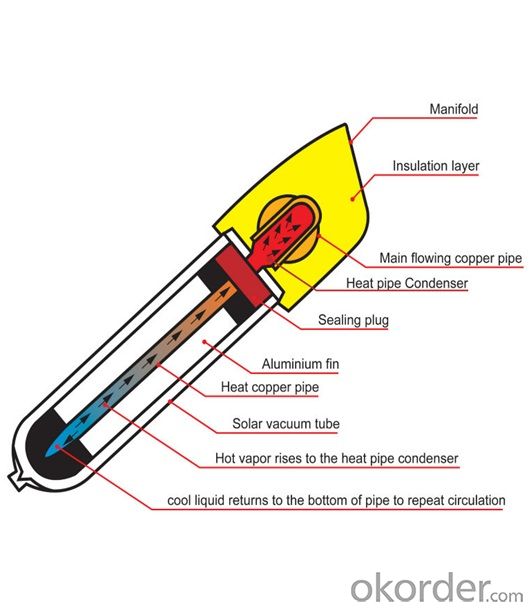

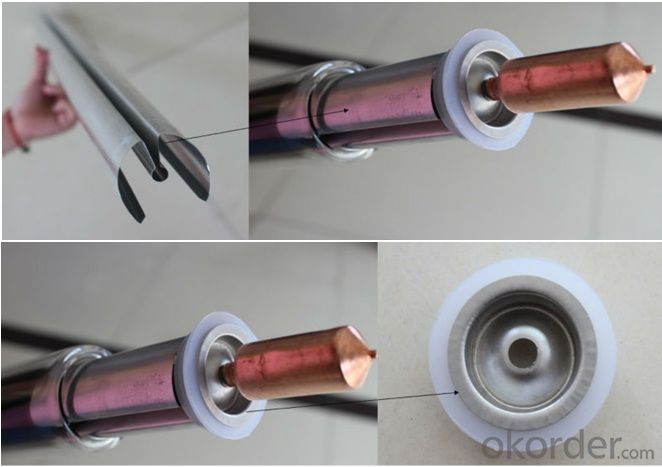
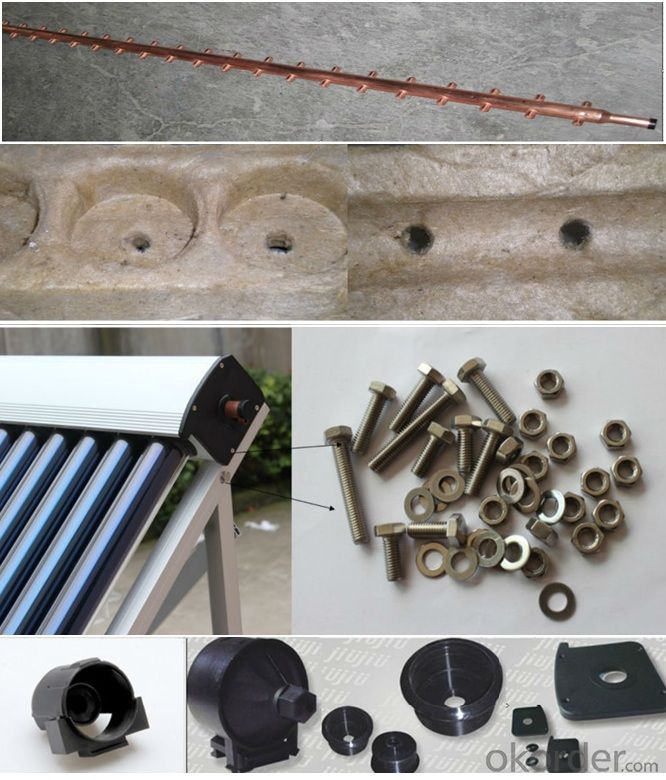
- Q: Can solar collectors be used for heating food processing facilities?
- Yes, solar collectors can be used for heating food processing facilities. Solar thermal systems can provide heat for various industrial processes, including heating water or air for food processing, sterilization, and pasteurization. By harnessing the sun's energy, solar collectors can significantly reduce the reliance on traditional fossil fuel-based heating systems, resulting in cost savings and environmental benefits.
- Q: Can solar collectors be used in combination with air conditioning systems?
- Yes, solar collectors can definitely be used in combination with air conditioning systems. Solar collectors, such as solar thermal panels or photovoltaic cells, can provide the energy needed to power the air conditioning system, reducing reliance on traditional electricity sources and leading to significant energy savings. Solar thermal panels can be used to heat water which can then be used for space heating or cooling through absorption chillers or other air conditioning systems. Photovoltaic cells can directly convert sunlight into electricity to power air conditioning units. By integrating solar collectors with air conditioning systems, it is possible to harness the abundant and renewable energy from the sun to cool buildings efficiently and sustainably.
- Q: What is the maximum temperature a solar collector can reach?
- The maximum temperature a solar collector can reach depends on various factors such as design, technology, and location. However, in general, solar collectors can reach temperatures of up to 200-300 degrees Celsius (392-572 degrees Fahrenheit).
- Q: Are there any grants or funding options available for solar collector installations?
- Yes, there are various grants and funding options available for solar collector installations. These include federal, state, and local government programs, as well as private sector initiatives. The specific grants and funding options may vary depending on your location and eligibility criteria, but it is worth researching and exploring these opportunities to potentially offset the costs of solar collector installations.
- Q: Can solar collectors be used in areas with high levels of air pollution?
- Yes, solar collectors can be used in areas with high levels of air pollution. While air pollution can have some impact on the efficiency of solar collectors, it does not render them completely ineffective. The performance of solar collectors may be slightly reduced due to reduced sunlight reaching the panels. However, advancements in technology have made solar collectors more resilient to air pollution, allowing them to still generate a significant amount of clean energy even in polluted areas.
- Q: Can solar collectors be used for generating electricity on cruise ships?
- Generating electricity on cruise ships is possible through the use of solar collectors. These collectors, also referred to as solar panels or photovoltaic (PV) systems, convert sunlight into electric power using the photovoltaic effect. Cruise ships have ample deck spaces that can be utilized to install solar panels, allowing them to take advantage of the abundant solar energy available at sea. By integrating solar collectors into the ship's power grid, cruise ships can obtain a renewable energy source to supplement their traditional methods of power generation. This can help reduce the ship's dependence on fossil fuels and decrease the emission of greenhouse gases, thus contributing to a more sustainable and environmentally friendly operation. While solar collectors alone may not fully satisfy a cruise ship's electricity needs, they can certainly contribute to energy reduction and offset a portion of the power requirements. Additionally, any excess electricity generated during peak solar hours can be stored in batteries for later use, ensuring a continuous and reliable power supply. Furthermore, the implementation of solar collectors on cruise ships can serve as a visible demonstration of the industry's dedication to sustainability. It showcases the adoption of renewable energy technologies, inspiring passengers and industry stakeholders to consider more environmentally conscious travel options. In conclusion, solar collectors can be effectively utilized to generate electricity on cruise ships. By harnessing the sun's power, cruise ships can minimize their environmental impact, decrease reliance on fossil fuels, and move towards a more sustainable and energy-efficient operation.
- Q: Can solar collectors be used in high-rise buildings?
- Yes, solar collectors can be used in high-rise buildings. With advancements in technology, solar collectors can be installed on rooftops or integrated into the building facades of high-rise structures. These collectors can harvest solar energy to provide electricity, heat water, or contribute to the building's overall energy needs. However, it is important to consider the building's orientation, shading from nearby structures, and available roof space when designing and installing solar collectors in high-rise buildings.
- Q: What is the impact of snow or ice accumulation on the performance of solar collectors?
- The impact of snow or ice accumulation on the performance of solar collectors can be significant. When snow or ice covers the surface of the solar collectors, it prevents sunlight from reaching the solar cells or panels. This reduces the amount of energy that can be converted from sunlight into electricity or thermal energy. Snow or ice accumulation also adds weight to the solar collectors, which can put stress on the mounting system or structure. If not properly designed or reinforced, this added weight can cause structural damage or even collapse of the solar collector system. Furthermore, snow or ice can create an insulating effect, causing a barrier between the solar collectors and the ambient temperature. This insulation can result in a decrease in the efficiency of the solar collectors as they are unable to reach their optimal operating temperature. To mitigate the impact of snow or ice accumulation, various strategies can be employed. One option is to tilt the solar collectors at an angle to allow the snow or ice to slide off more easily. Additionally, installing a heating system or using materials with anti-icing properties can help prevent snow or ice buildup on the surface of the solar collectors. Regular maintenance and cleaning of the solar collectors during winter months is also crucial to ensure optimal performance. This may involve removing snow or ice manually or using automated systems, such as brushes or blowers, to clear the surface. Overall, snow or ice accumulation on solar collectors can significantly hinder their performance, reducing energy output and potentially damaging the system. It is therefore essential to consider the impact of winter weather conditions and implement appropriate measures to mitigate these effects.
- Q: Are there any size limitations for solar collectors?
- Yes, there are size limitations for solar collectors. The size of a solar collector is determined by various factors such as the available space, the amount of sunlight in the area, and the specific requirements of the system. However, it is possible to create larger solar collectors by combining multiple smaller ones or using advanced technology to increase their efficiency.
- Q: Can solar collectors be used for heating recreational facilities?
- Yes, solar collectors can be used for heating recreational facilities. Solar thermal systems can provide a renewable and cost-effective solution for heating swimming pools, sports facilities, and other recreational areas. By harnessing the sun's energy, solar collectors can heat water or air, providing a comfortable temperature for users. This not only reduces operational costs but also contributes to the sustainability of the facility by reducing carbon emissions.
Send your message to us
Aet Solar Collectors - 18 Tubes High Efficiency Solar Pipes
- Loading Port:
- China main port
- Payment Terms:
- TT OR LC
- Min Order Qty:
- 5 set
- Supply Capability:
- 10000 set/month
OKorder Service Pledge
OKorder Financial Service
Similar products
Hot products
Hot Searches






